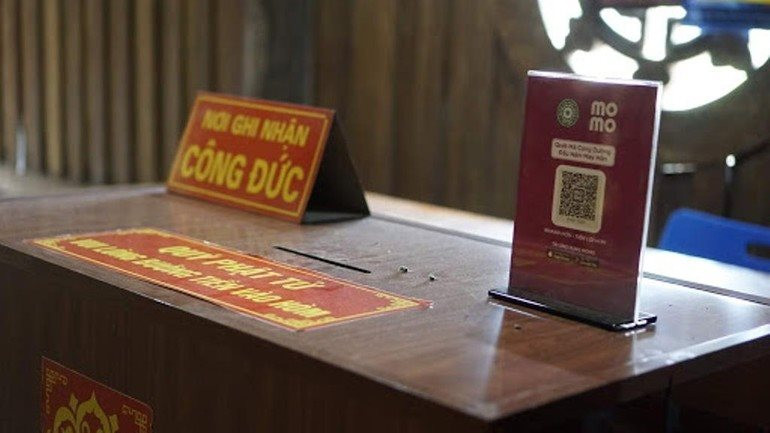Receiving donations by scanning QR codes and transferring money is a civilized way that should be widely replicated in Hai Duong, contributing to the publicity and transparency of this source of money.

Last year, during a business trip to Bac Giang, I visited some relics here. Because I did not carry cash, I was very happy when I saw the QR code scanning board to donate to build a temple in Bac Giang City. After scanning the code, I joked with my colleagues that by donating money in this way, even the gods would know who the sender was, so there was no need to bother writing a petition, and there was less confusion.
That said, cashless donations are not only convenient for tourists but also for management agencies because the cash flow is very public and transparent.
A friend of mine who works in the banking sector also said that if the donation money was transferred, the banking sector would not have to worry about counting small change at the end of the year. The image of large and small sacks of money with many low denominations brought by relics, communal houses, temples, and pagodas after each donation counting period is also a nightmare for many employees in the sector.
Circular No. 04/2023/TT-BTC of the Ministry of Finance guiding the management and financial revenue and expenditure for festival organization and donation money, sponsorship for relics and festival activities, effective from March 19, 2023, clearly stipulates the management of donation money in both cash and bank transfer forms.
Accordingly, relics, religious establishments, and beliefs open deposit accounts at the State Treasury or commercial banks to reflect the receipt, management, and use of donations and sponsorships for relics and festival activities in the form of transfers and electronic payment methods. For cash, assign a person to receive and open a book to record the full amount of money received.
Money in the donation box (if any) is counted daily or weekly and the total amount received is recorded. Money that is not placed in the right place or is not suitable for the implementation of civilized lifestyle at the relic site is collected for counting or put into the donation box for general counting...
The regulations are in place, but implementation is still debatable. Recently, after a general review of the management and collection of donations in the whole province, localities and relevant sectors of Hai Duong assessed that most of the relics in the province have opened books to record the revenue and expenditure of donations and sponsorships. Some relics have opened accounts at commercial banks to monitor the receipt and disbursement of donations and sponsorships for the relics and the organization of festival activities. However, there are still some relics that track donations and sponsorships internally, not publicly and transparently...
It is worth mentioning that, when I went to some major relics in the province, I did not see any QR codes to support donations. That means, although I have an account at a commercial bank, receiving donations from visitors at many relics and religious establishments is still mainly in cash. And receiving cash is more risky than transferring money.
In fact, there have been many cases of theft and embezzlement of donation money. Earlier this year, an official of the Ong Hoang Muoi Temple Management Board (Nghe An) was administratively punished for embezzling more than 1 million VND in donation money. In Thailand, a former abbot of the temple was sentenced to 468 years in prison for embezzling about 300 million baht (nearly 200 billion VND) in donation money.
Of course, receiving donations via bank transfer, especially scanning QR codes, also faces risks such as someone taking advantage of pasting their QR code but recording it as belonging to the Monument Management Board, the owner of the religious establishment, or the account being taken over by hackers... However, this risk is not high if the competent authority does a good job of security and clearly specifies the location of the QR code, publicly announces the account number on the media, and in the appropriate location.
Donations are a source of money supported by people and tourists to support the management boards of relics, religious and belief establishments to restore and repair facilities, organize festival activities or do charity work. There should be measures to manage this resource openly, transparently, and effectively, and promoting donations through bank transfers is one of the measures that should be widely replicated in the context of our current digital transformation.
HOAI ANH